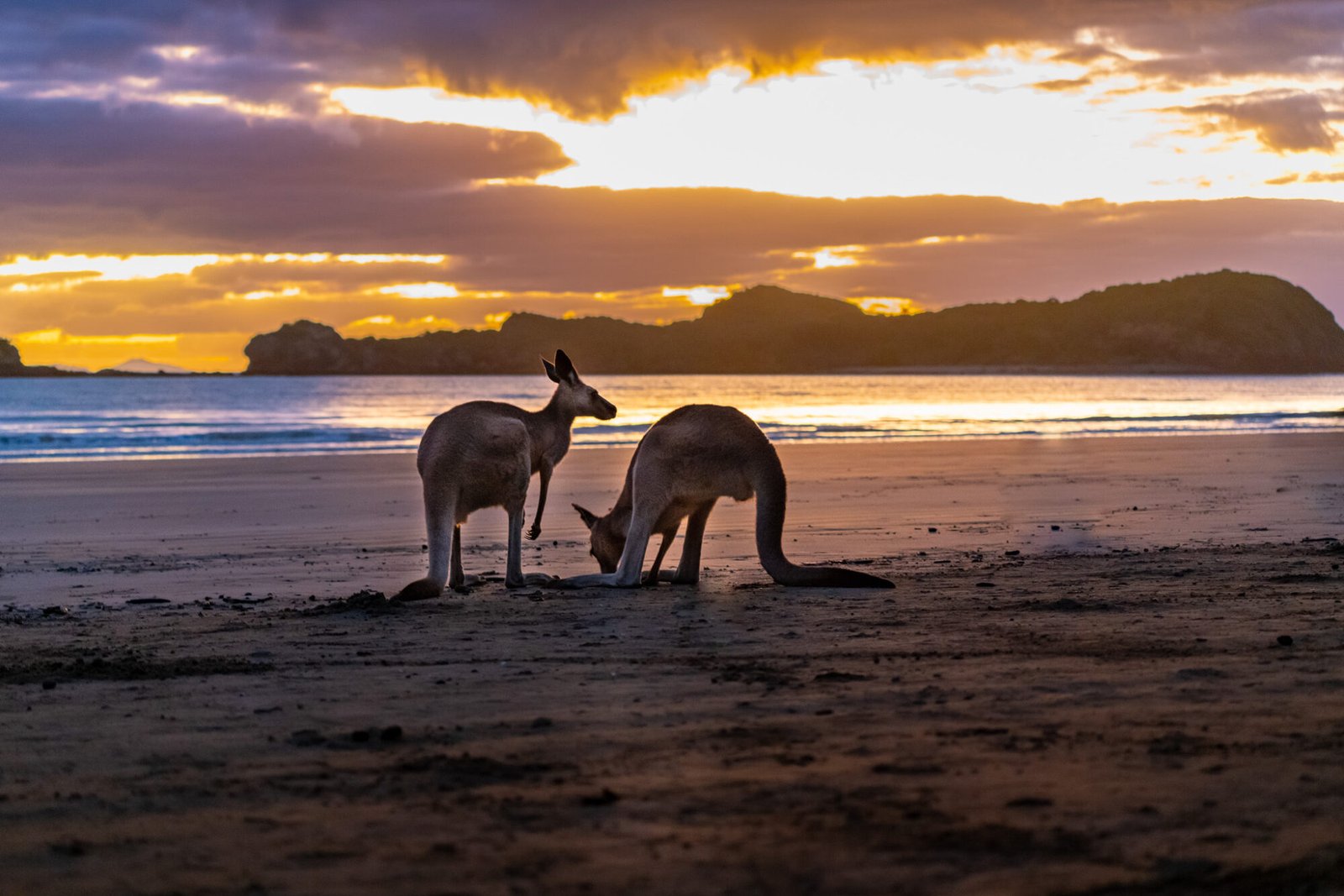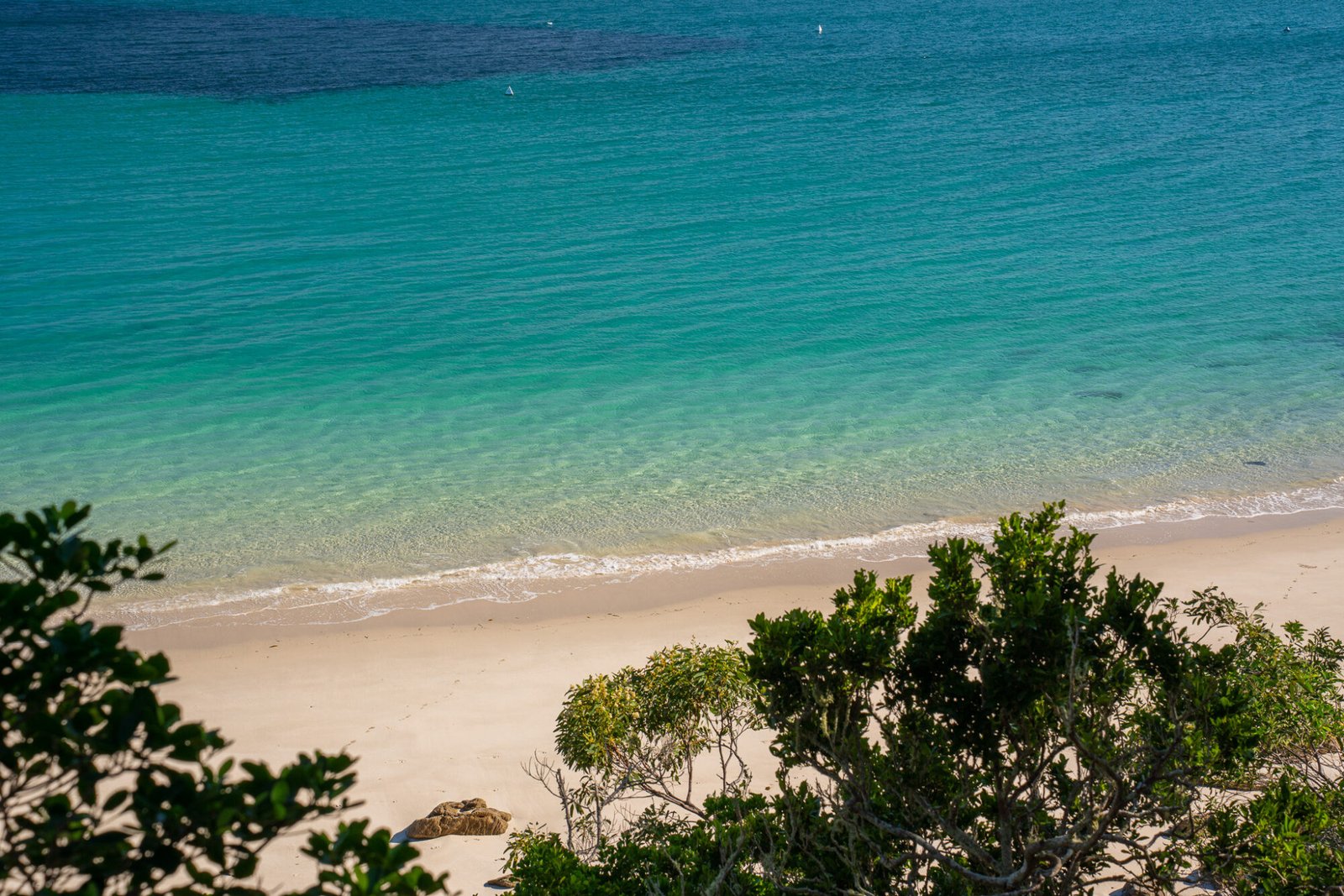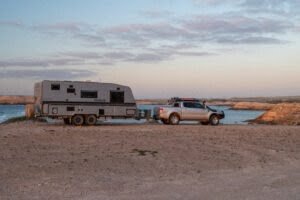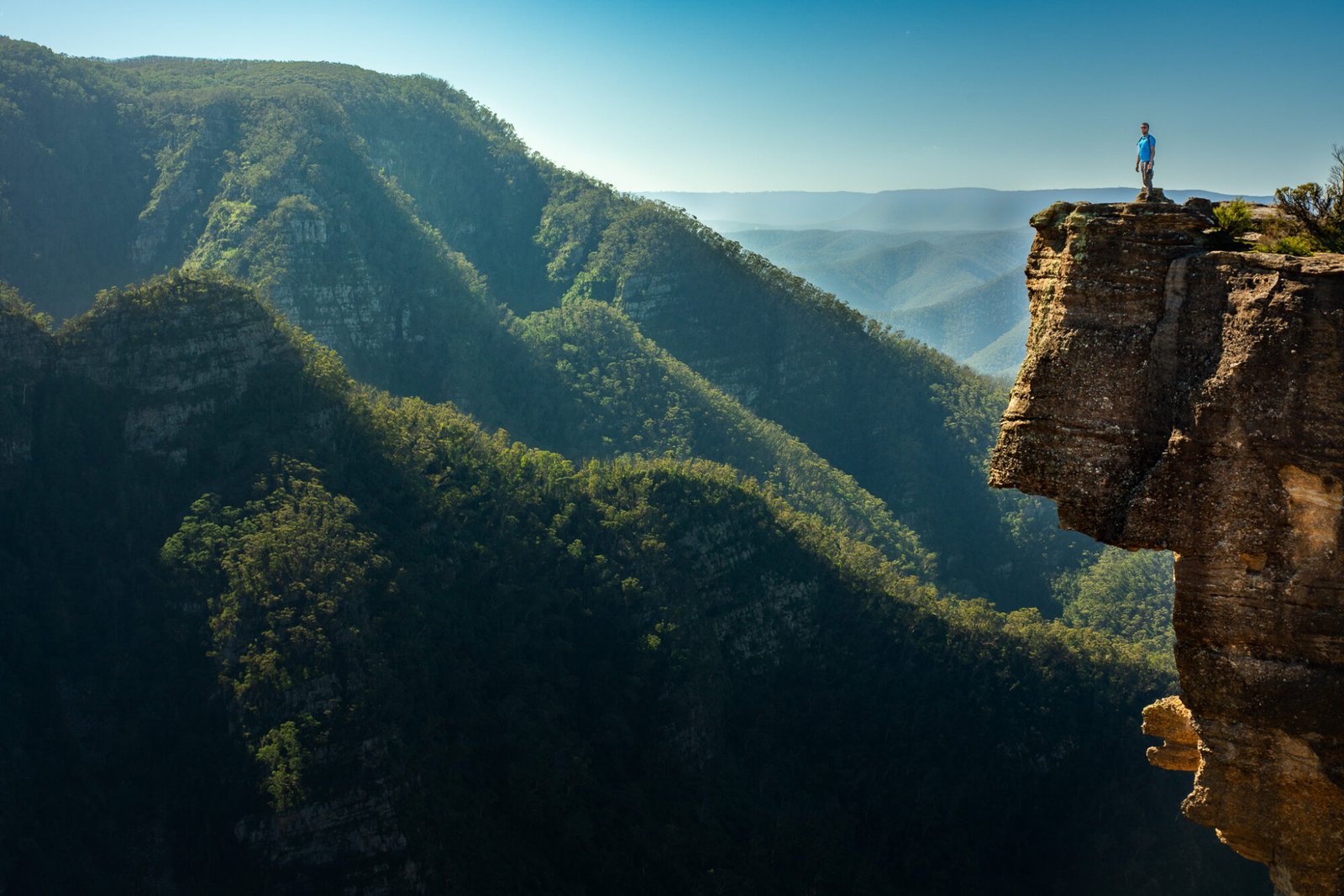While the southern section of the East Coast, covered in Part One, is spectacular, the further north you go along this coastline, the better it gets and includes two of the most loved places in Tasmania: Freycinet National Park and Bay of Fires, along with many lesser known but also spectacular natural wonders.
Freycinet National Park
If you see a Tasmania tourism photo with stunningly clear white sand beaches and incredible vistas, chances are it’s from Freycinet National Park. It can take a decent amount of exertion to get to these beautiful scenes, but as long as the weather’s clear, you’ll be rewarded for your efforts with views you won’t soon forget.
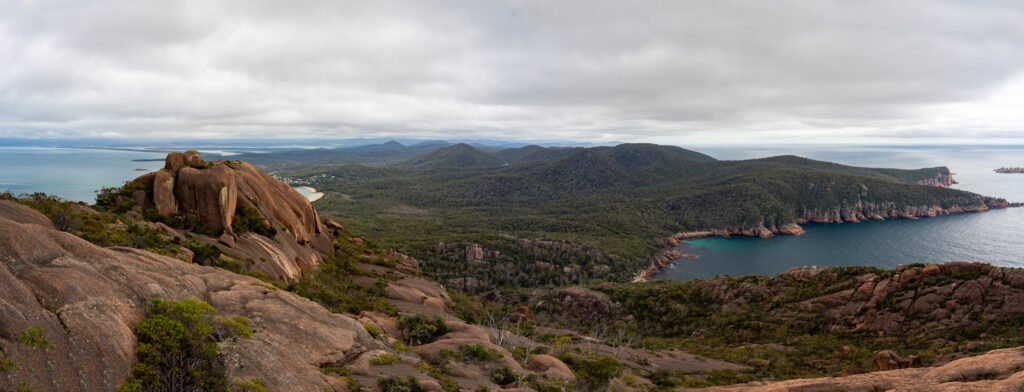
There are several camping options located in the national park, including walk-in only camps in the southern part of the peninsula, but our pick is the free camp at Friendly Beach campground. The campground sits north of the national park and depending on your luck in securing a site can include great views of this long stretch of beach.
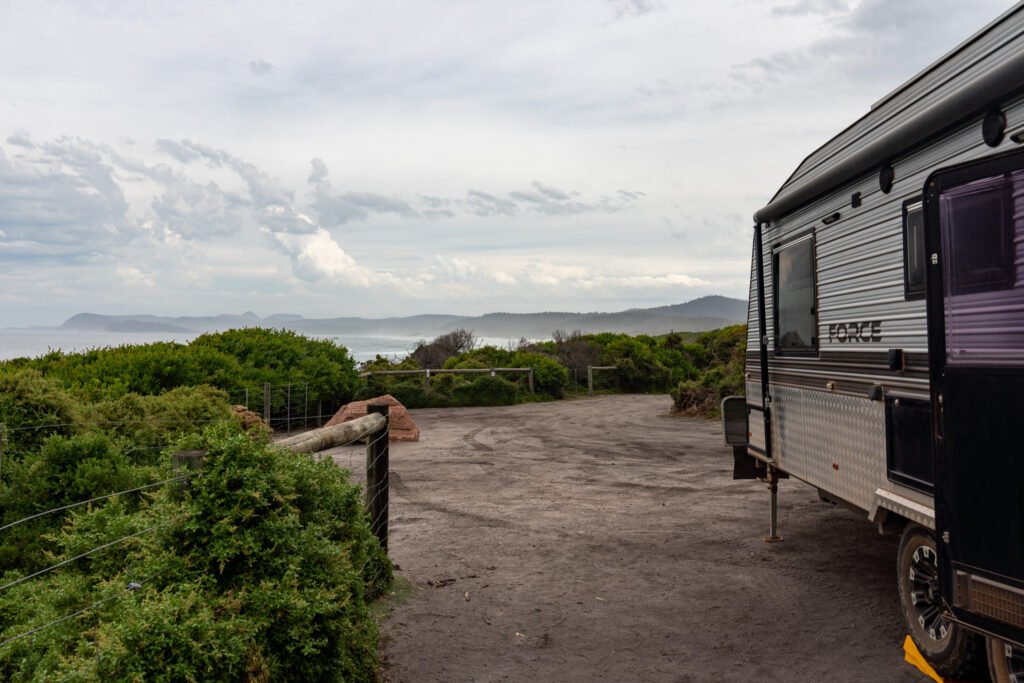
You’ll also usually have plenty of wildlife such as kangaroos and wallabies milling about your campsite. The sites here are quite sought after, especially during peak times, so timing is everything! Unfortunately, as of late 2023 this area closed indefinitely due to extensive fire damage. More up-to-date information can be found on Tasmania Parks’ website here.

A visit to Freycinet is not complete without seeing its main drawcard, Wineglass Bay, the perfectly curved stretch of white sand beach that often features on lists of the world’s most beautiful beaches. If you’re up for a bit of a hike, we recommend the Wineglass Bay and Hazards loop.
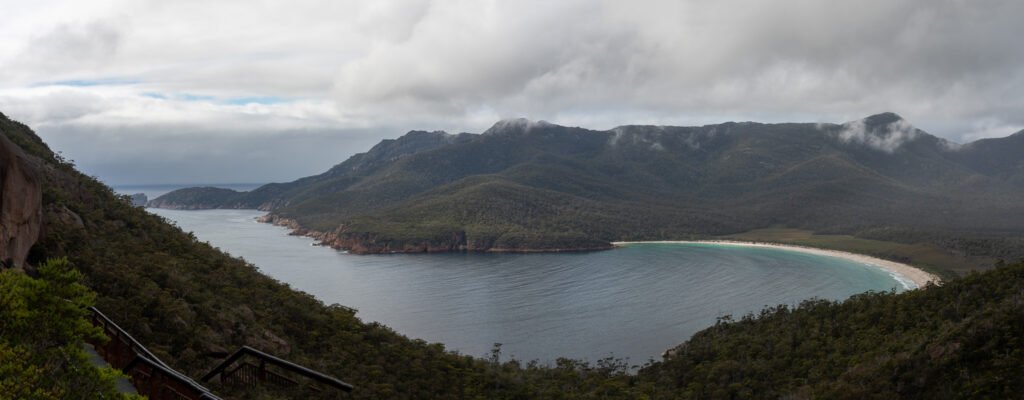
This hike is an 11km circuit that takes about 4-5 hours and will take you to the main highlights of the area. It starts with a short but steep walk to the Wineglass Bay Lookout (which can be done as its own hike if you prefer), then you continue down the hill to see this iconic beach up close (and go for a cooling dip if you’d like!). After this, you can backtrack back to the carpark, or cross the isthmus to Hazards Beach, then through a winding coastal bushland track back to the start. This section of the track feels longer than you’d expect but is still quite pleasant.
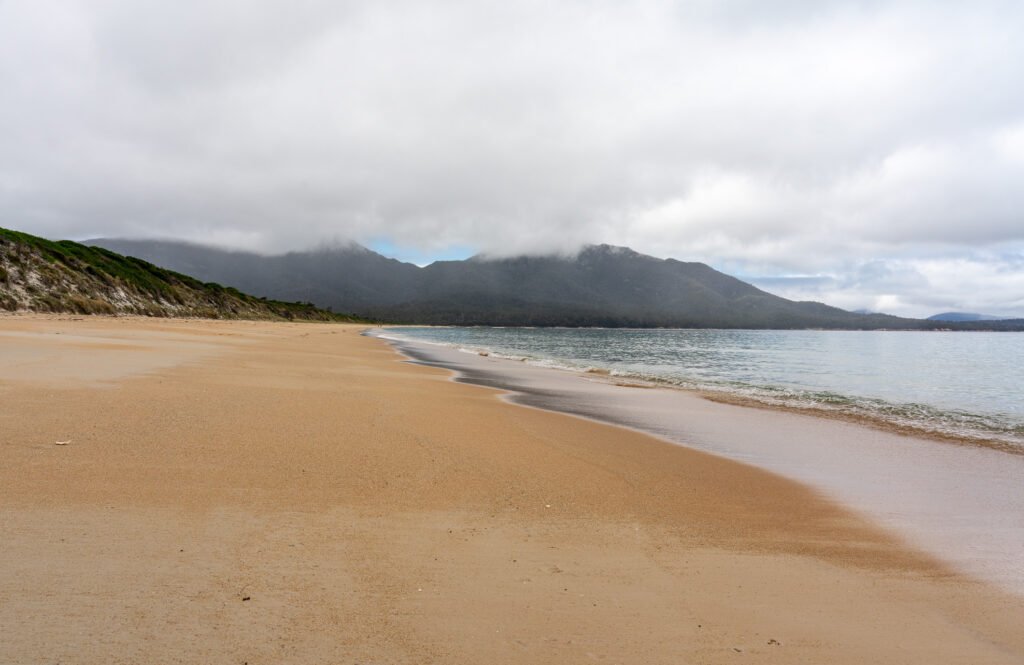
If you’d like to explore more, you can do a larger multi-day hike through the southern section of the peninsula, or several cruises are available as a great option to see parts of the peninsula not even accessible on foot.
Another popular hike in the area is the Mount Amos hike, which is not for the faint of heart and should absolutely not be attempted if there is any precipitation. The hike itself is only 3.6km return but it mostly entails an extremely steep climb up a fairly smooth rock face. Unfortunately for us our visit to Mount Amos, while requiring all the effort, resulted in none of the reward as a low cloud blocked our view for the entire time at the top; therefore, we suggest tackling this one on a clear day. Oh well, can’t win them all!
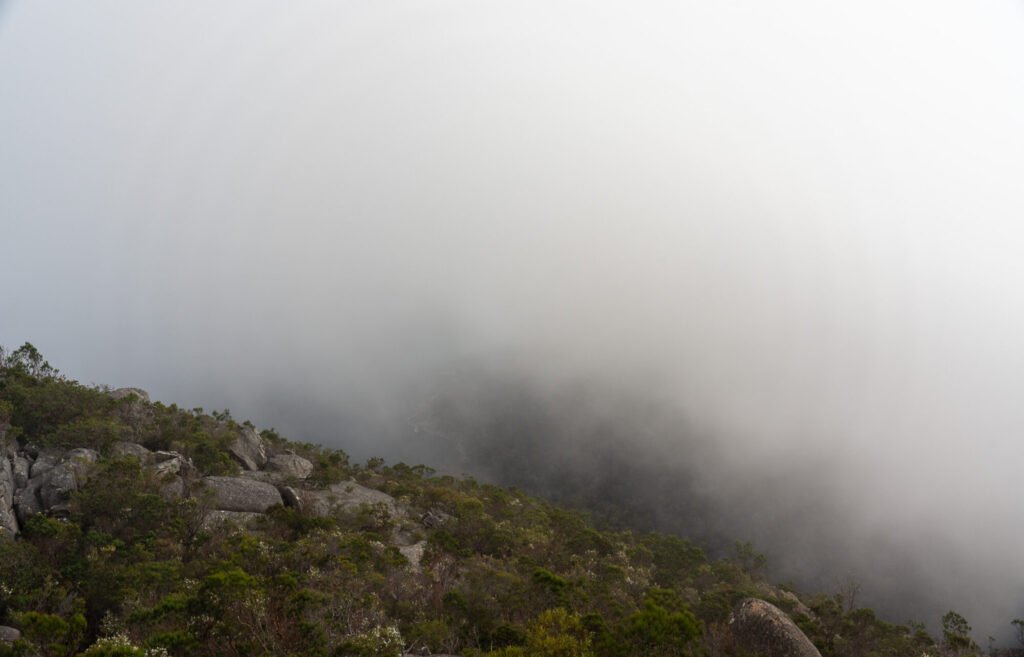
Click here to see what the view would have been on a clear day.
One of the lesser known hikes but still quite adventurous is the Mount Parsons Hike from Sleepy Bay. You will need a certain level of fitness and ability to attempt this track as it involves climbing (sometimes scrambling) up and down steep boulders, but it does offer great views from the top. If that sounds like it’s not for you, the hike to Sleepy Bay itself is a very easy 20 minute return hike to the pretty little bay.

If you’re looking for a bit of respite after all this activity, Honeymoon Bay is the perfect spot to unwind. The clear, calm waters are ideal for swimming and snorkelling. For a tasty meal, the fish and chips and ice cream at Ice Cream & Co will hit the spot.

Bicheno
Bicheno is another popular seaside town along the east coast. Whalers Lookout is a great spot to get a good overview of the town and coastline. When the tides are right, the Bicheno Blowhole is quite impressive, and the nearby Lobster Shack is famous for its lobster rolls.

There is a sizeable Little Penguin colony in Bicheno which you can visit with a guided tour. Keen surfers will find a couple of good surf breaks here.
A worthwhile day trip from Bicheno is a visit to Douglas Apsley National Park. There are a variety of hikes of different length here; the most popular is the hike to Apsley Waterhole and Gorge. The waterhole is easily accessible from the carpark and offers a lovely large pool perfect for a cooling dip.

Then you continue through the undulating bushland to get to Apsley Gorge. If the riverbed is dry, you can make the hike a circuit and walk back via the riverbed, which will add 1-2 hours to your hike time; otherwise, returning along the same track will take about 2-3 hours overall.
Ironhouse Point
Ironhouse Point sits about 30 minutes north of Bicheno. It has a winery and brewery and offers free camping on site. A little beach offers opportunities for exploring but can be somewhat treacherous on a rough day. For the fit and able, the steep climb up nearby St Patrick’s Head provides sweeping views of the surrounding area. The trailhead is located about 25km from Ironhouse Point and the walk is 3km return of steep hiking.

If you continue inland, through quaint country towns like St Marys and Fingal, you will eventually reach two natural beauties: Mathinna Falls and the Evercreech Forest. Mathinna Falls track is a beautiful walk through temperate rainforest and the waterfall is comprised of a lower and upper falls.
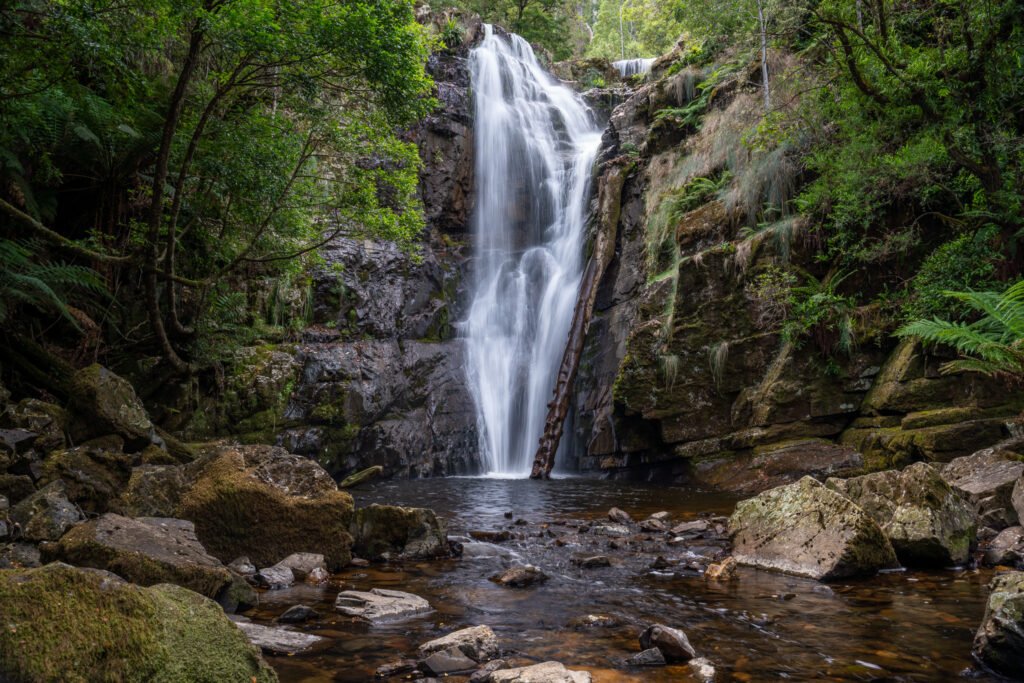
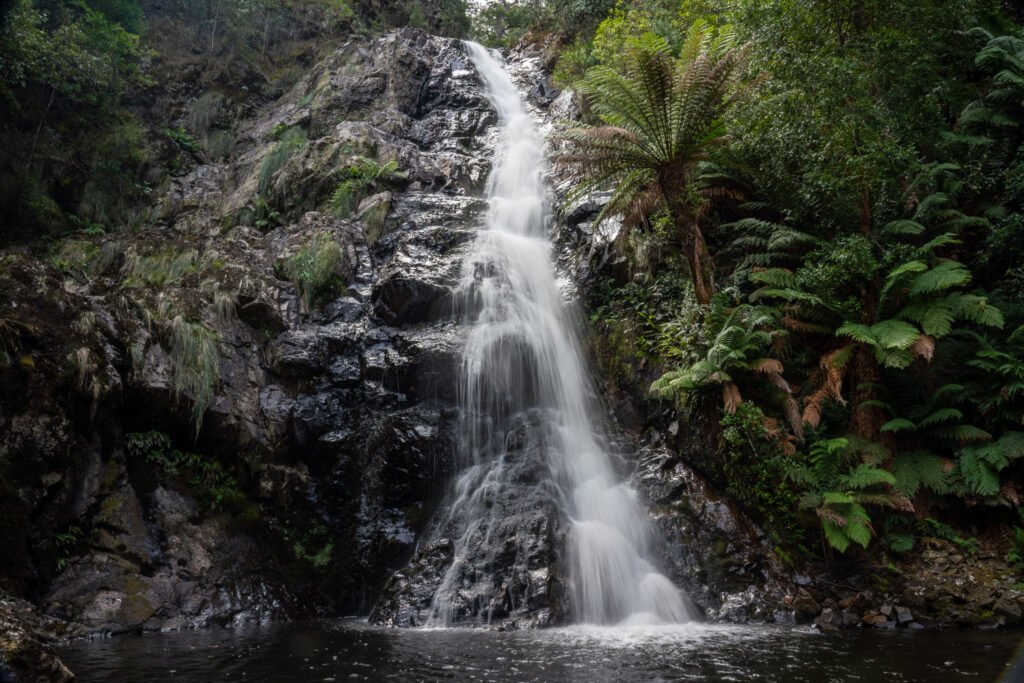
The upper falls is reached by a somewhat sketchy track on a steep incline so isn’t recommended if you’re not sure-footed. The Evercreech Forest has a few walks available, including Evercreech Falls and the White Knights, white gum trees that have grown up to 95 metres tall. You can even free camp at the forest reserve (tents only).
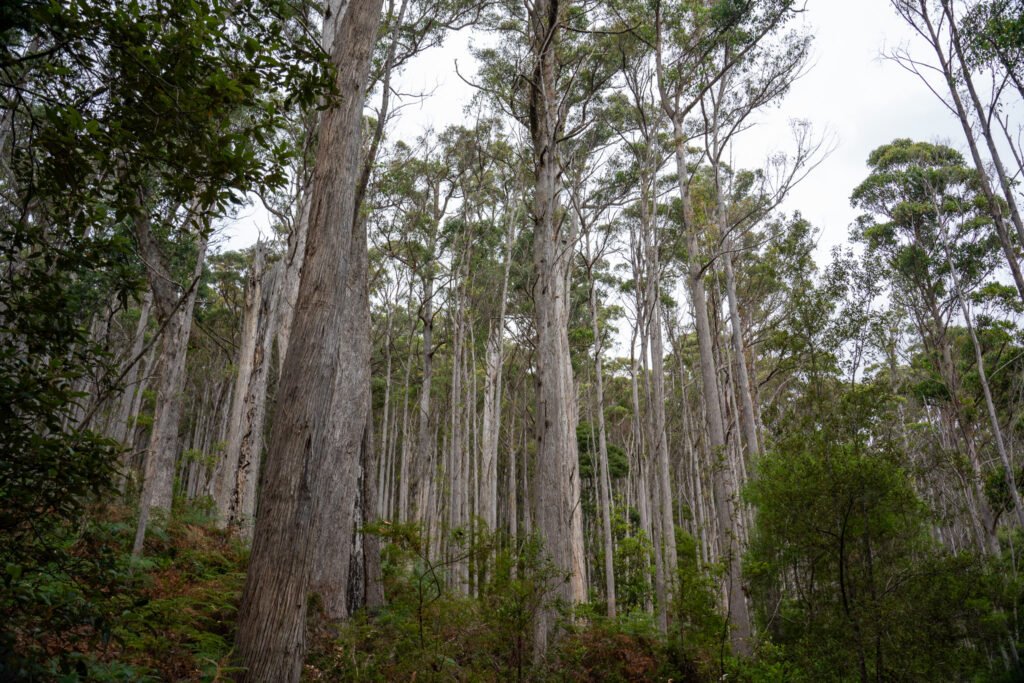
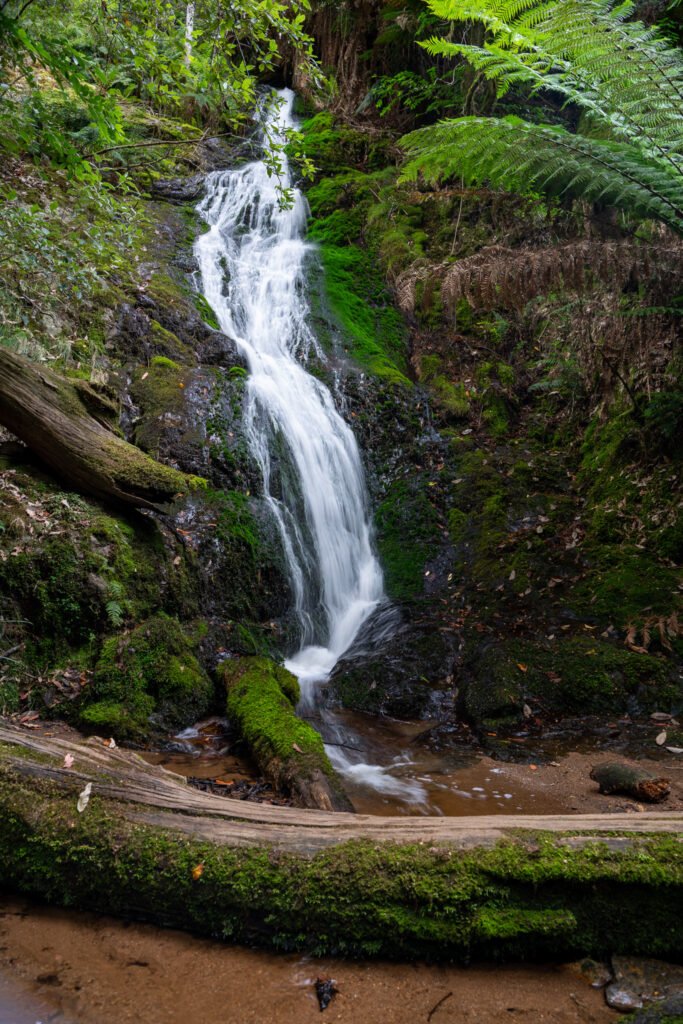
St Helens
The town of St Helens is often seen as the gateway to the Bay of Fires, but there is more to see and do in this area. St Helens Conservation Area has many pretty spots to explore, including 4WD-only beach driving on Peron Dunes and walking along the wild coastline of Burns Beach to Barrel Beach. Alternatively, St Helens, along with Derby, has become a mountain biking destination, with plenty of tracks to choose from nearby.

Mount Williams National Park is located just under an hour north of St Helens; access is via unsealed roads. There are several campgrounds available; however, due to tight tracks and low branches at most of the campgrounds, large vans are not recommended. If you have a bigger van, you are better off leaving the van in St Helens or Bay of Fires and day-tripping in. The park is broken up into a southern and northern section. The southern section has beautiful coastal access at Policemans Point (although technically part of the Bay of Fires Reserve) and Eddystone Point, great for any water activity from snorkelling to boating.
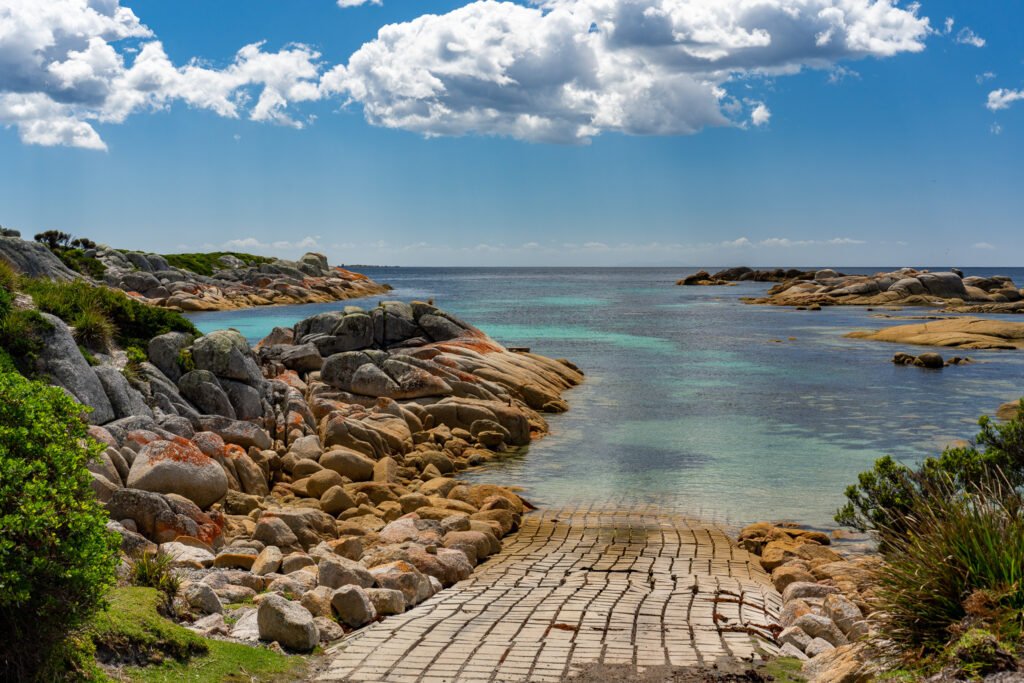

The northern section features the Forester Kangaroo Drive where, particularly at dusk and dawn, you are likely to spot Tasmania’s only species of kangaroo. If Bay of Fires is feeling just a bit too busy, Mt Williams is a great option to enjoy the beauty of this coastline without the crowds.
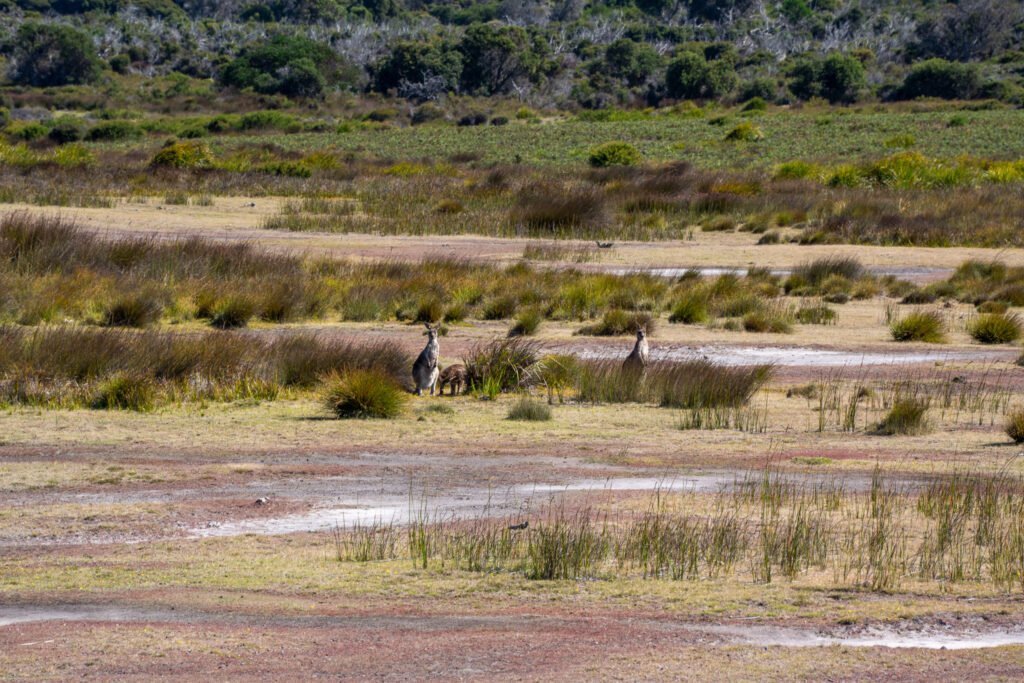
Bay of Fires
Bay of Fires, a 50km stretch of coastline in the northeast corner of the state, will leave you in awe with its vibrant colours, from the clear blue ocean to the pure white sand and the orange lichen-covered rocks. The name “Bay of Fires” comes from when early explorers first sailed past this area and could see the fires from the local Indigenous population along the coastline.

There are several options for free camps in the area, and anyone who’s stayed at one of them will swear that one’s the best. Truth is, they’re all pretty amazing! We ended up at Swimcart Beach and managed to snag a very sought-after beachfront spot; a lot of it comes down to luck of timing, but mid-morning is usually a good time to come in as that’s often when people are heading off to their next destination. Other popular nearby free camps are Cosy Corner and Jeanneret Beach.

Whether you want to stroll the long stretch of white sand, explore rockpools, cast a line, snorkel along the rocks, or simply sit back and take it all in, Bay of Fires is the perfect place for this and more. There are even a couple inland lagoons perfect for a kayak or SUP. Take your time to explore, and you will find many hidden treasures along this stunning coastline.

The Gardens is the northern end of public access to the Bay of Fires. There is only a day use area here. It offers a short circuit walk through bushland and along the beach and can be a great option for water activities when the ocean is calm.

The northern section of Tasmania’s East Coast, from Freycinet to Bay of Fires, reveals a mesmerizing blend of nature and adventure. From the iconic Wineglass Bay in Freycinet National Park to the vibrant hues of Binalong Bay, and inland gems such as Douglas Apley National Park, this journey showcases some of the best of Tasmania’s natural beauty.

